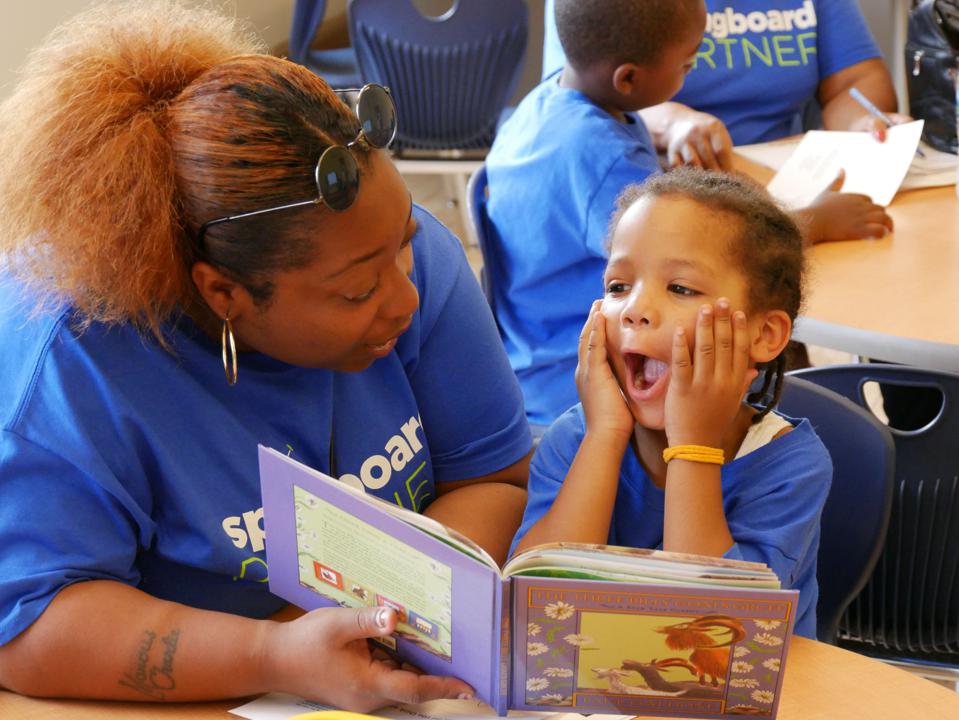
Image via Forbes.com
Parents of marginalized students often feel marginalized themselves by schools and teachers. Sometimes this marginalization is inadvertent: statistically, the higher the parents’ income, the more likely they are to attend school events and to volunteer. Those who volunteer frequently have more opportunity to build relationships with teachers and administrators, to get information about the school, and to learn how to navigate the educational system. It may also give them access to more resources and opportunities for their children. Low income parents don’t attend events or meetings or volunteer in their children’s schools with the same frequency for a variety of reasons. Many of these are out of their control, such as hourly jobs – sometimes multiple jobs – that require a trade-off between volunteering at school and getting paid; language or cultural barriers; and fear or distrust of school or school staff. The highest income parents attend more than double the number of meetings and events per year than parents in the lowest income bracket.¹
Research shows that: 1. Families are more likely to get involved in their child’s education when they trust their child’s teacher; 2. When teachers reach out to families it increases the likelihood that they will get involved in their child’s education in some way; and 3. Schools and teachers that treat families as assets to their children’s education (rather than liabilities) are better able to build positive relationships between parents and the school.²
To better involve marginalized parents, districts need to focus first on developing a constructive, 2-way relationship between adult stakeholders and schools. Begin not by telling parents what they must do to support their learners, but instead by collecting input from parents first on school issues that are pressing to them and then on wider issues like language learning or equity.³ Trust comes from being heard and responded to in ways that show care and respect. Increased trust between parents and schools will ultimately lead to more parental involvement.
Marginalized parents often don’t volunteer information that might offer insight into a student’s situation because many of them have experienced situations where their opinions were discounted in some way, or where they were presumed to be part of the problem. Countering demographic stereotypes and resisting a culture that normalizes failure or resorts quickly to exclusionary discipline practices are also critical in building 2-way relationships. Parents need to feel that teachers want their children to succeed, not that they are waiting to lower the boom. Some of them aren’t contacted by the school unless there’s a problem, so all communication from the school becomes “bad.” Making parents partners in working through behavioral and academic issues communicates that the teacher and school value the parents for what they know best: their children. Conveying a growth-mindset that allows for setbacks as part of the growth process communicates that teachers want kids to succeed. Feeling valued makes it easier for parents to become more involved with their student’s education, as does the feeling that they are working with the teacher to help their child do well. No discussion of involving marginalized parents would be complete without acknowledging logistics as a key barrier to both communication and more on-site involvement. Schools and teachers need to make every effort to find out well in advance of any issues when the best times to meet or talk are for the parents, and then strive to communicate only within those timeframes. This reduces stress and frustration for everyone.
Schools trying to engage parents often work to defuse stressful events like parent-teacher conferences by eating a meal together and allowing people to relax and socialize with teachers and school leaders before talking about their child’s progress. Sometimes they have kids perform at these events. They emphasize the importance of listening to parents and responding promptly to concerns. They seek ways to address student behavior that keep kids in class. They wait patiently for trust to grow. They seek partnership with families. The word for this? Community.
_______________________________________
¹ How parents widen– or shrink– academic gaps. EdWeek.org. October 13, 2020. https://www.edweek.org/ew/articles/2017/04/19/how-parents-widen–or-shrink–academic-gaps.html
² Grant, K. and Rey, J. Home, School, and Community Collaboration: Culturally Responsive Family Involvement. Sage Publications. California. 2010. pp. 4-5
³Ippolito, J. Bringing Marginalized Parents and Caregivers into their Children’s Schooling. thelearningexchange.ca. August 2012. https://thelearningexchange.ca/wp-content/uploads/2017/02/WW_MarginParents.pdf
